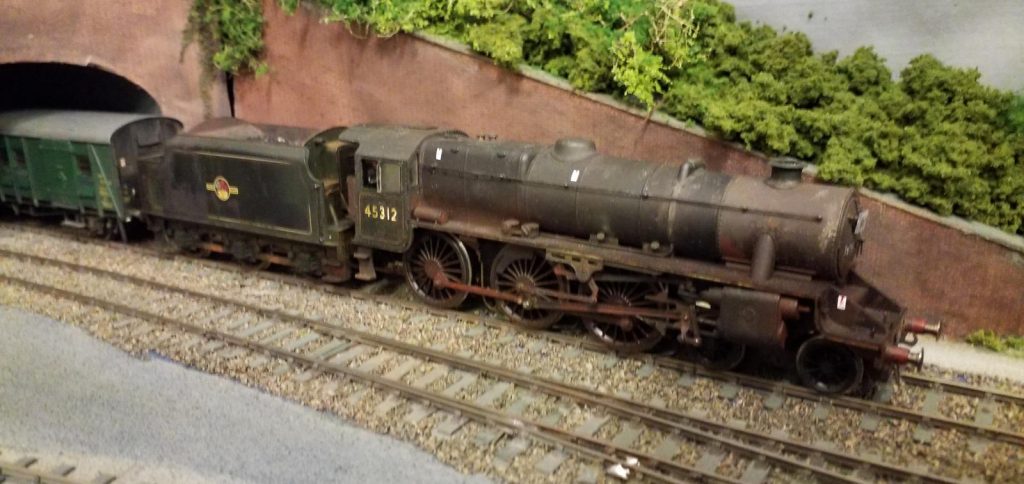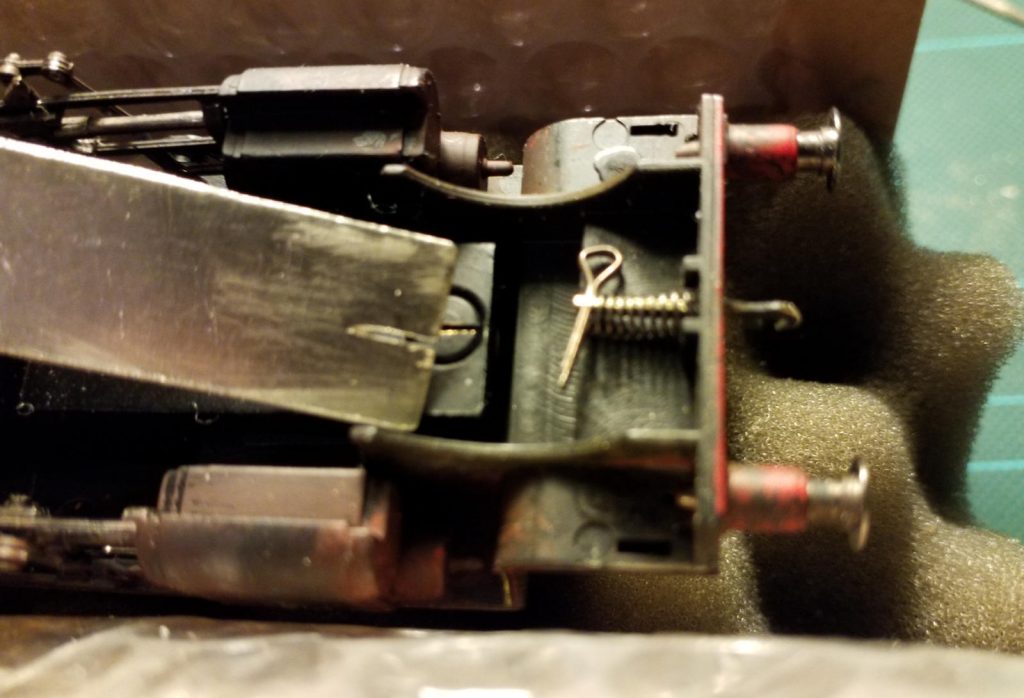With all group activities forestalled and everyone trapped at home, there is plenty of time to press on with modelling projects. In the first of an occasional series which we might call “How my railway has benefited from Covid-19” we hear from Richard P about his recent modelling activities.
The lockdown has given me an opportunity to finish off some long outstanding incomplete models and mend casualties.
The first repair was to my Southern Railway N class that had been shuttering coinciding with each revolution of the driving wheels. This engine had run smoothly for 15 years. The obvious suspect was the motion but that seemed OK. Fortunately the engine is easily dismantled, a keeper plate holds the driving wheel sets in place allowing the axle connected to the motor to be released and checked. Nope, wheels were good and firm on the axle, quartering was correct, the axle mounted gear wheel looked right. Hmmm…. remove the motor and reassemble ‘bottom end’ so the model can be pushed along and observe any resistance to smooth transit. Again could not identify the source of the problem.
In desperation I ordered a new motor c/w plastic frame in to which the motor fits and also holds the gears engaging the worm. On reassemble and trial run I was dissatisfied with performance. The replacement plastic frame holding the motor looked the same as the original but certainly did not slide smoothly into the recess in the mazak frame, so out it came again as perhaps the gear in the frame engaged poorly with the gear on the driving wheel axle due to the location of the squeezed in frame. And yes that was it, the plastic frame needed a little bit carved off it to slide in nicely. A trial run and at last success, smooth running.
So, although I got there in the end, I don’t really know why it ran badly at the start as the original gears and motor look fine.
Next if you can still stand this comes the Black 5, it’s a Hornby converted to EM by Mike H. All it needed was couplings both ends. Toyed with putting AJs on, but they preclude putting a good looking screw coupling on the front and was not easy to fit on the tender without ‘pulling posts’ as advocated by Chris Pendlenton.
So, it was screw-couplings. I cut a slot I’m a piece of plate to hold the stem of the coupling while compressing the spring, and with my third hand inserted the split pin. See photo of inspired tool. Why it is necessary to have springs beats me. I know the prototypes have them but in model form do we really have the possibility of snatched couplings breaking. Next joy was breaking the return crank off the Black 5 by careless handling. That took a careful soldering back on without gumming up the connecting rod and coupling rod.

